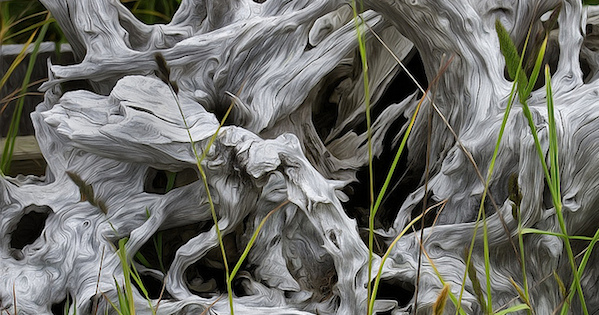
In reporting on science, I am drawn to odd, abstruse subjects in seemingly insignificant niches, and to those who study them. In the grand scheme of things, it may be more important to understand and write about some of the hottest topics in physics—say, the formation and evolution of a galaxy, or metamaterials, or solid-state quantum computation. However, I am also intrigued to read about the discovery of some new and obscure species of crustacean.
Such was the case when I came across the description of two new species of driftwood hoppers, “a rare, difficult to find, ecological group of Talitridae which are virtually confined to rotting driftwood,” as ecologist David Wildish, the author of a new paper on the discovery, writes in the latest issue of Zoosystematics and Evolution. Wildish, of Fisheries & Oceans Canada in New Brunswick, is one of only two experts worldwide who have studied these species (“the other is my collaborator, Dr. Laura Pavesi,” he tells me via email.)
Talitrids belong to a shrimplike order of Crustacea called amphipods. The most commonly known Talitridae are the sandhoppers, which live in burrows on sandy beaches, or shorehoppers, which survive on seaweed wrack. Driftwood hoppers, by contrast, dwell and feed on decomposing driftwood, recycling it back to its elements.
Only seven species of driftwood hoppers are known, two of them just described by Wildish. One of them, Macarorchestia pavesiae, was found along the coastal regions of the Adriatic Sea. The other, Neotenorchestia kenwildishi, is named in honor of Kenneth J. Wildish, the author’s younger brother, who discovered and collected it in 2011 in The Swale, a marine channel separating the English county of Kent (where the two grew up) from the Isle of Sheppey.
“In 2011 when I was visiting him we went for a walk along the banks of the Swale,” Wildish writes. “Ken spotted a driftwood log on the shore and found the new species within this drifting log. Eventually he secured this log to an old cattle fence and sampled it through that summer.”
 All currently known species of driftwood hoppers are confined to the northern hemisphere, but their slowly disintegrating dwellings enable them to range across long distances, unlike their relatives that inhabit wrack (seaweed). Thus “they can teach us valuable lessons about how natural dispersal and evolution came about,” Wildish writes. “A driftwood log has a much longer lifetime than a floating raft of wrack, and hence the former can travel longer distances when floating at sea guided by winds and currents.” Some evidence suggests that their log-clinging tenacity enabled these travelers to colonize the Azores, a volcanic archipelago in the North Atlantic, where they further evolved into cave-dwelling or leaf-litter-inhabiting forms.
All currently known species of driftwood hoppers are confined to the northern hemisphere, but their slowly disintegrating dwellings enable them to range across long distances, unlike their relatives that inhabit wrack (seaweed). Thus “they can teach us valuable lessons about how natural dispersal and evolution came about,” Wildish writes. “A driftwood log has a much longer lifetime than a floating raft of wrack, and hence the former can travel longer distances when floating at sea guided by winds and currents.” Some evidence suggests that their log-clinging tenacity enabled these travelers to colonize the Azores, a volcanic archipelago in the North Atlantic, where they further evolved into cave-dwelling or leaf-litter-inhabiting forms.
Measuring between eight and 16 millimeters in length, these animals are so minute that I wondered how Wildish had managed to hunt them down. He explains: “Take a small hand axe in your backpack and spend holiday time on those beaches where driftwood strands. Take plastic Ziploc bags to collect the animals—keep moist with a little seawater-moistened sand or wrack until you get home. Then kill and preserve them. If you have forgotten to bring a preservative, use [undiluted] whisky or vodka in a small bottle.”
As to why he would engage in such a quixotic quest, the answer is succinct: “It must be the same principle that somebody had to climb Everest.”

